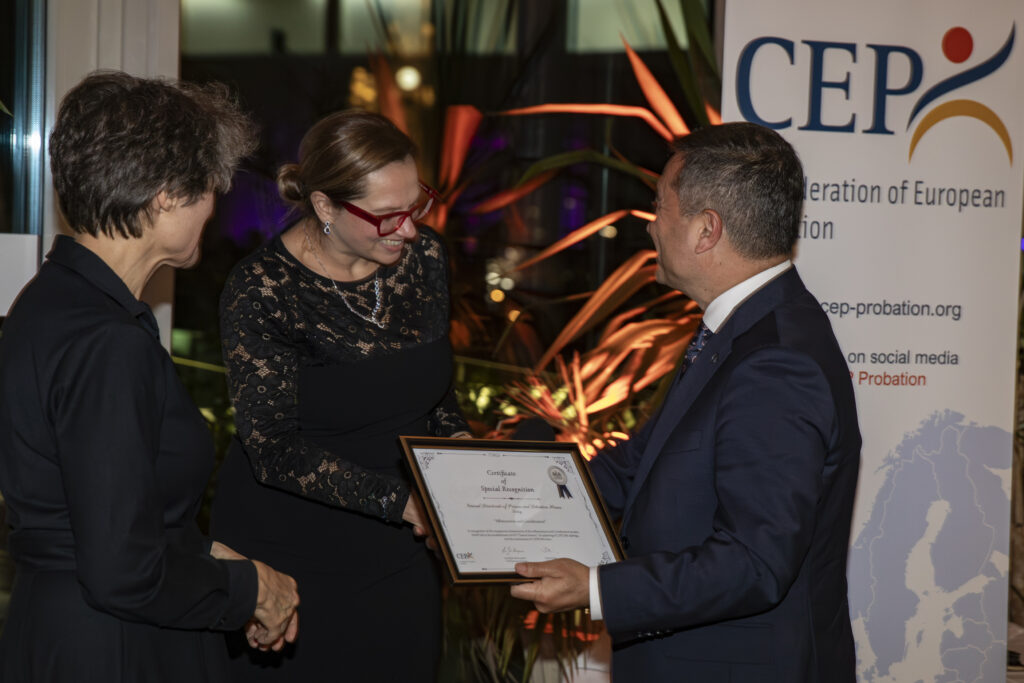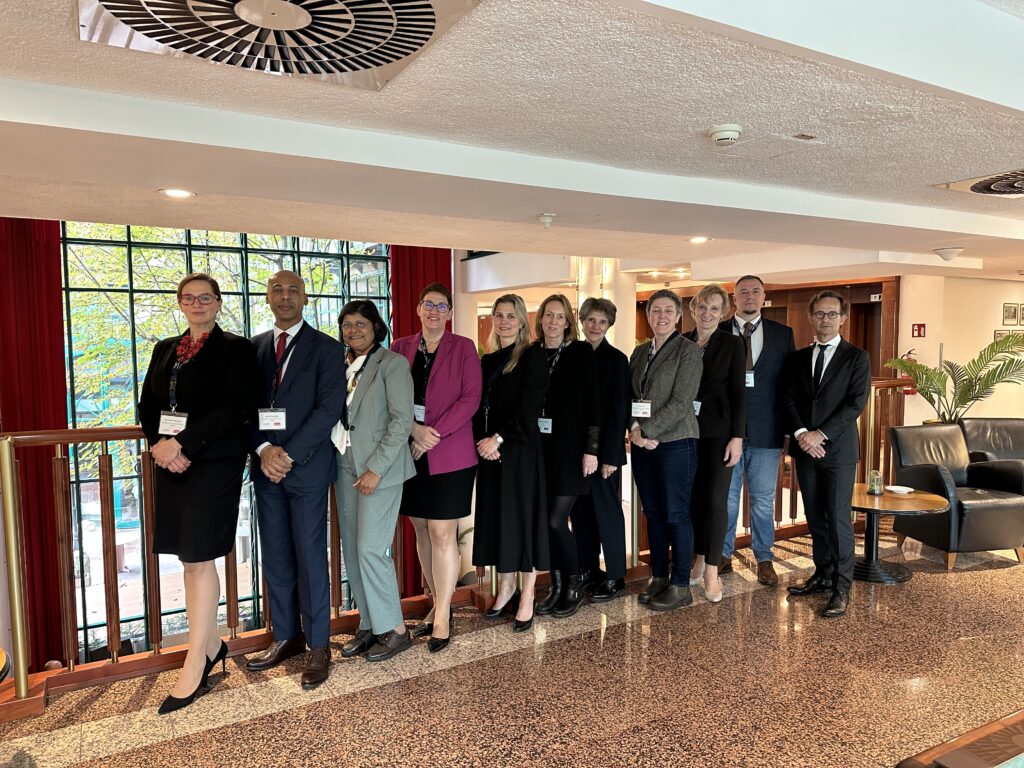Previous Article
News
Catalonian Open Prison Regime: Individuality and continuity are key
European countries have found different ways to manage the transition from prison to a community sentence or release. The Spanish system in general, and the Catalonian prison system in particular, has designed the open prison regime, which gradually introduces inmates back to society. “The regime has proven to work,” says Paula Montero i Brasero, Deputy Director General of Rehabilitation Programmes at the Justice Department of Catalonia “because it provides more continuity for the individual and puts the offender in touch with the public services.”

Successful strategy
About 25% of all inmates are currently in the open prison regime; the majority of this group has already served at least the ½ of their sentences, but some of them can benefit from this regime from the very beginning of their time in prison.
“All offenders at open regime have their own individual plan, based on the results of RNR (Risk Needs Responsivity) assessment tools, used among all the Catalonian prison service. At the same time, the system provides, trough community resources, special interventions to those who need them because of the type of crime committed or because of their special needs: For instance, to those convicted for violent or sexual crimes, for drug related sentences and for driving offences.” says Paula Montero. “This is very important because the ultimate goal is normalisation and social integration.”
Internal research has also shown the success of the open regime and conditional release. The percentage of ex-offenders who desist from crime after living in the open regime prisons and conditional release falls to 18%. The average recidivism rate is 40%, which makes the 22% a very significant achievement.
Two lessons
The cooperation of the offender is at the basis of the success of the open prison regime. According to Paula Montero, there are two characteristics of the system that contribute to its success. “One lesson that can be learned is that the individual approach works very well, this is why we assign a single case manager to each offender. The first lesson ties in with the second one: The case manager is in touch with the social and community services on an individual basis. This collaboration results in a close relationship between the offender and the community, which helps in the desistance process.
Acceptance
Part of the rehabilitation process consisted in drugs treatments, vocational training and employment training. “The family, if present, plays a large role in the offender’s process of inclusion in society,” says Paula Montero. “The offender will be moved to a new facility, where it has to spend the night and at least 8 hours of the day. The other hours can be spent with the family and/or at work. As a result, the community can accept the convicted person back in a gradual way. The social network is slowly re-established.” But that is not the only positive outcome, continues Paula Montero: “It is important that the criminal stigma is also lifted, I think we also influence public opinion towards prison and probation sentences in a positive way. This helps us and the (ex-)offender greatly.”
Different modalities to apply open regime
Due to the individual approach to the prisoner, different tools or modalities are used to execute the sentence. For instance, an offender who has the duty to take care of small children during the night and works the rest of the day can benefit of a curfew of eight hours at home with Electronic Monitoring, instead of returning to prison each night. EM is a tool, not a sentence itself. So offenders under EM also have an individual plan followed up by a personal case manager.
Another option under the umbrella of open regime is to send offenders to “hostels”. The hostels are called “dependent units”, because each one is affiliated with a open regime prison. A non-profit organization provides all the services according to a fixed contract with the Justice Department. “Yes, this is quite an interesting experience,” says Paula Montero, “because the design and follow up of the concrete activities of the program are a duty of the NGO case manager, but in a close contact with the staff of open regime prisons, which retain the legal responsibility behind the legal authorities. The main goal is that offenders who serve the sentence there may learn how to live as any other citizen and with normal neighbor residents. For this reason most of the hostels are placed in the middle of cities around all the Catalonian territory.”
Finally, the last option that the open regime system offers is the possibility to serve the sentence at a community based unit, placed at farms outside the city or at special flats inside cities, intended for the treatment of sever drug addictions problems. When this option is possible, the negative effects of incarceration on the treatment are avoided.
Link to the website of the Catalonian Ministry of Justice Rehabilitation and Prison Services

Related News
Keep up to date with the latest developments, stories, and updates on probation from across Europe and beyond. Find relevant news and insights shaping the field today.
New

Others
New DG JUSTICE Newsletter on funding opportunities & funded projects is out.
03/11/2025
The latest edition of the DG JUSTICE Newsletter is now out, packed with funding opportunities and funded projects!
New

Uncategorized
Newsletter October 2025 out now
30/10/2025
CEP’s latest newsletter is out now! Articles on the CEP conference: Public Perception of Probation, Expert Network Meeting on Education and Training, CEP Calls for EM expert group, CEP awards and more.>> Read here
Recap

CEP Events, Projects
Special recognition for the Afforestation and Coordination Project
29/10/2025
During the CEP Awards Ceremony on October 15, CEP also granted a special recognition to the General Directorate of Prisons and Detention Houses of Türkiye for the Afforestation and Coordination Project.
New

CEP members
Invitation to submit a proposal to conduct an evaluation within the CEP work programme
28/10/2025
We would like to invite you to nominate a candidate (see point 1) to submit a proposal to conduct an evaluation within the CEP work programme.
New

CEP Events
CEP presents the four winners of the CEP Awards 2025
27/10/2025
During the General Assembly aand CEP Conference on Gender-Based Violence in Vienna, Austria, CEP presented the four CEP Awards to its winners With the awards, CEP would like to celebrate outstanding contributions to probation within Europe. We were glad to receive all the impressive submissions of which the following winners are chosen. Congratulations!
New

CEP Board
Meet the CEP Board
22/10/2025
The General Assembly takes place every three years. The last General Assembly was held on 15 October 2025 in Vienna, Austria.
The CEP Board has a President, two Vice-Presidents, a Treasurer and a maximum of eight ordinary Board members. The General Assembly elects the President, two Vice-Presidents and a minimum of three and a maximum of five other board members from among its members. Three members may be appointed by the Board from among the full or associated members to ensure that the specific expertise and interests are represented. The Board appoints the Treasurer, who can be a board member or an ex-officio board member of which an explanation is given in the internal regulations.
Subscribe to our bi-monthly email newsletter!
"*" indicates required fields
- Keep up to date with important probation developments and insights.

